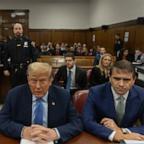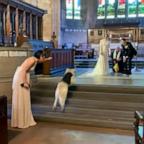Cool Jobs: Cave Explorer, Da Vinci Detective
How'd you like to explore caves or play detective--for a living?
June 3, 2009 — -- "I really have a cool job. I really do," said Hazel Barton. "I went to seven continents last year. Who gets to do that?"
On paper her job may sound a bit arcane -- she's a Professor of integrative science at Northern Kentucky University, not far from Cincinnati. But that's not the half of it. She's really a cave explorer.
She studies the hardy forms of life that thrive even in the cold, dark, seemingly barren reaches below the ground. Scientists often refer to them as "extremeophiles" -- organisms that can survive without the sunlight, nutrients and running water we long assumed were necessary for life as we know it.
If microbes (or larger organisms) can make it in places science never expected, what does that say about the odds for life on Mars, or on planets circling distant stars? What does it say about humans' place in the universe?
How to answer such cosmic questions? There are samples to be taken, remote corners to be probed. And -- well, someone has to do it.
Barton is one of several scientists on a panel called "Cool Jobs" at next week's World Science Festival in New York City. They are there to show how the title "scientist" need not be remote or hard for regular people to relate to. The work, they say, can, in fact, be cool.
She's joined by Tyrone Hayes, a biologist at the University of California at Berkeley; and Maurizio Seracini, who has become a master at examining great works of Italian art with high-tech scans that do not damage them.
Seracini is mentioned in passing in Dan Brown's "The Da Vinci Code." In one line, Brown writes about a painting, attributed to Leonardo, for which only the underlying sketch was genuine. "Italian art diagnostician Maurizio Seracini had unveiled the unsettling truth," Brown writes.
If anything, though, Seracini works at settling questions about Leonardo, Botticelli, Caravaggio, and other titans of art history. Using multispectral imaging, he can tell if there is an old mural hidden beneath newer layers of paint, or damage beneath a healthy-looking masterwork. He set up his own company in Florence, and is a fellow of the National Geographic Society as well.




